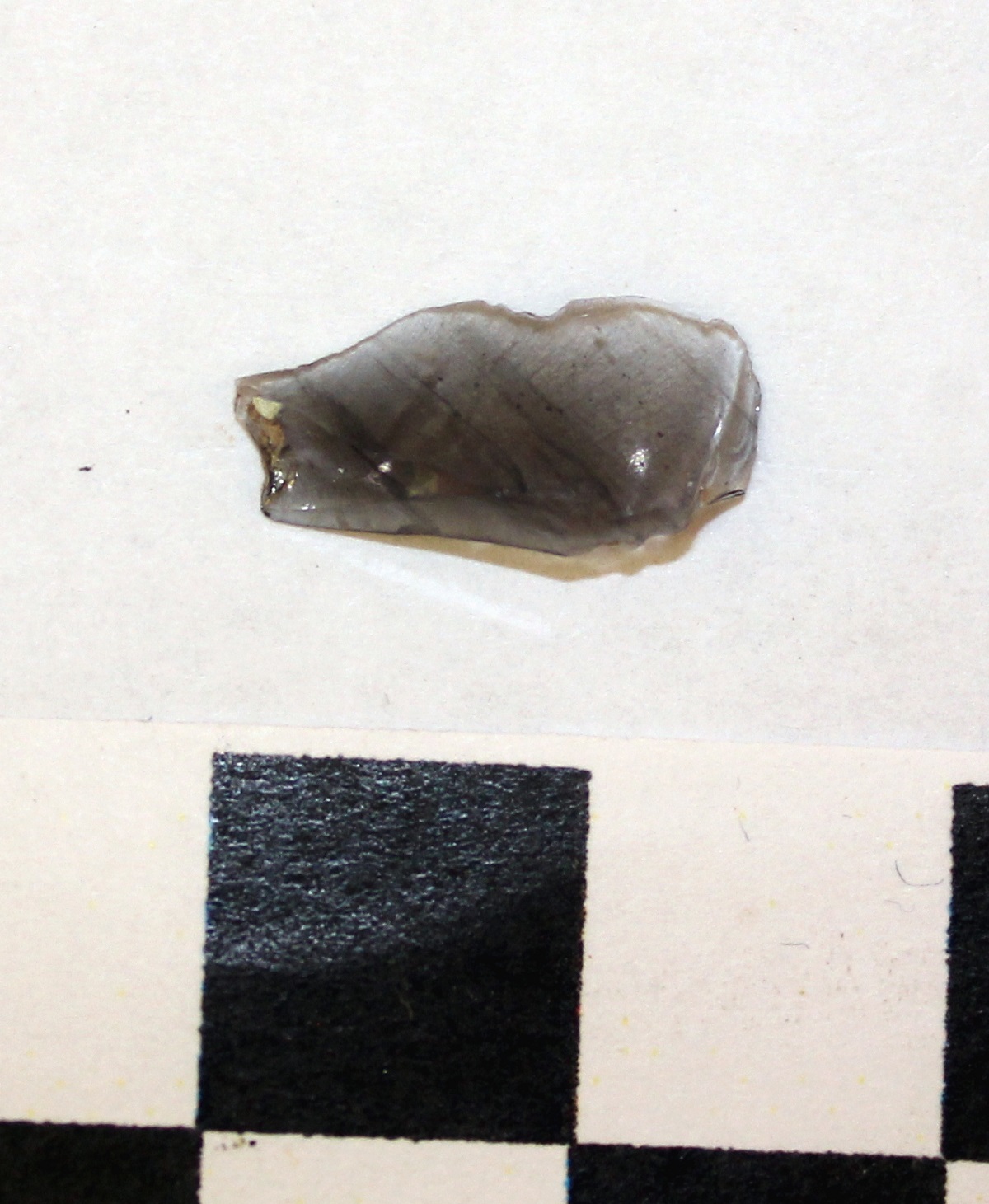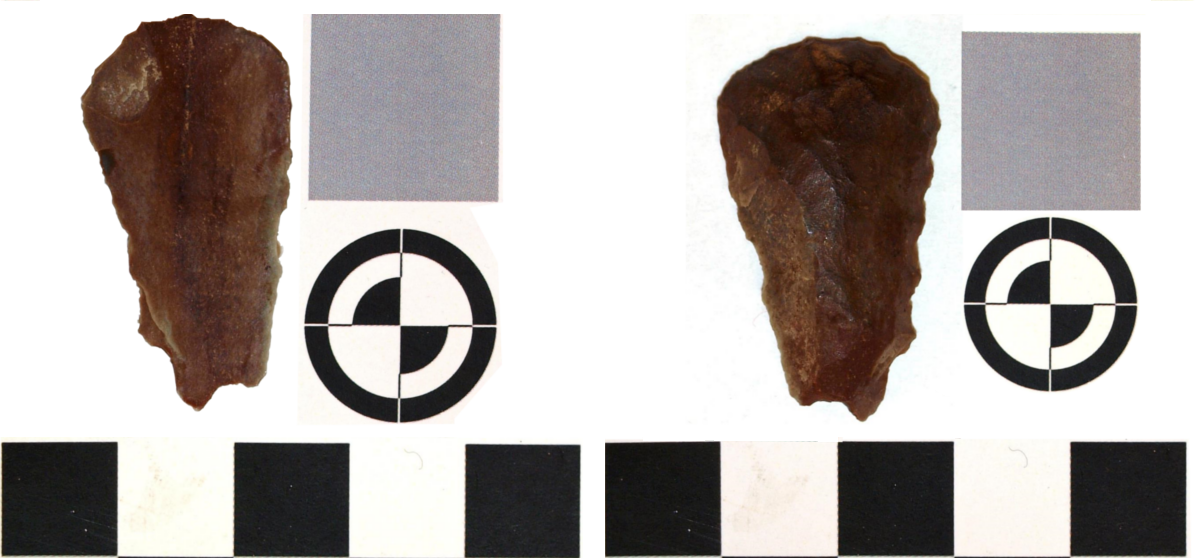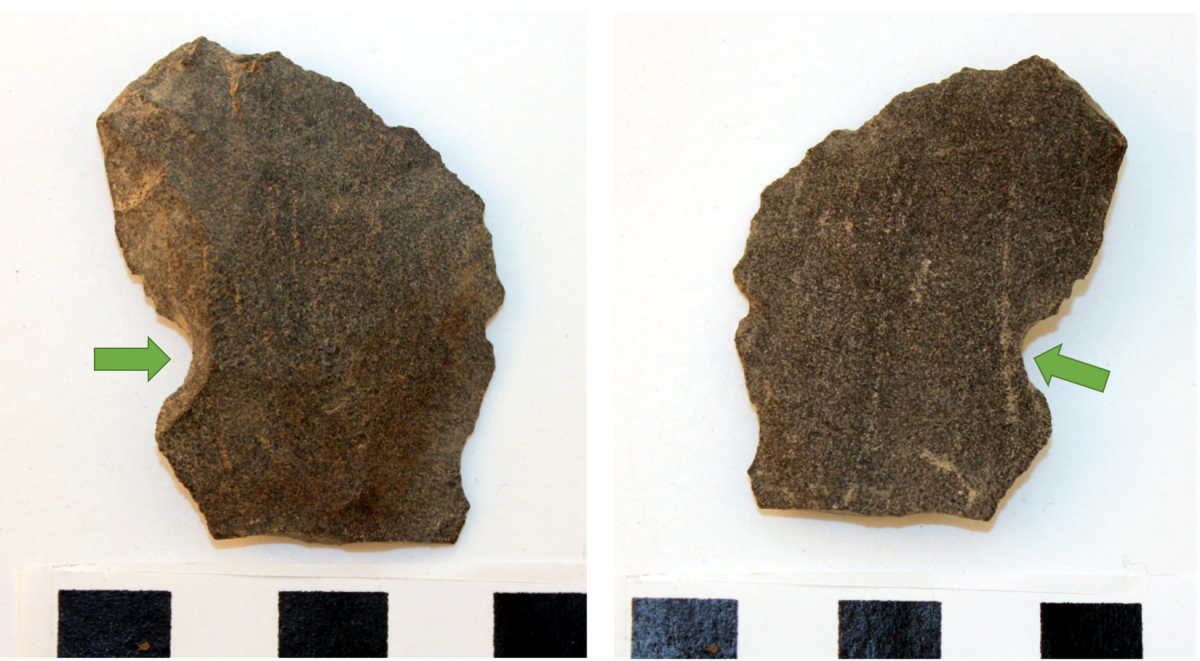Obsidian is commonly known as volcanic glass. It forms when a volcano erupts and the lava is cooled extremely quickly, such as when it flows into a water body. In Alberta obsidian is considered to be an “exotic material” because it does not occur here naturally. When we find it here it tells us that people in the past engaged in long distance trade, usually with people in British Columbia or the Yukon. In 2016 Teresa found this lovely obsidian flake at site FaPr-6 located near the community of Caroline.
Tag: Caroline
End Scraper
This week we feature a stone tool found upstream on Fall Creek, about 55 km west of the community of Caroline, AB. We were undertaking an assessment for Sundre Forest Products and testing a flat area overlooking the creek (shown below) when Ryan found the end scraper shown above.
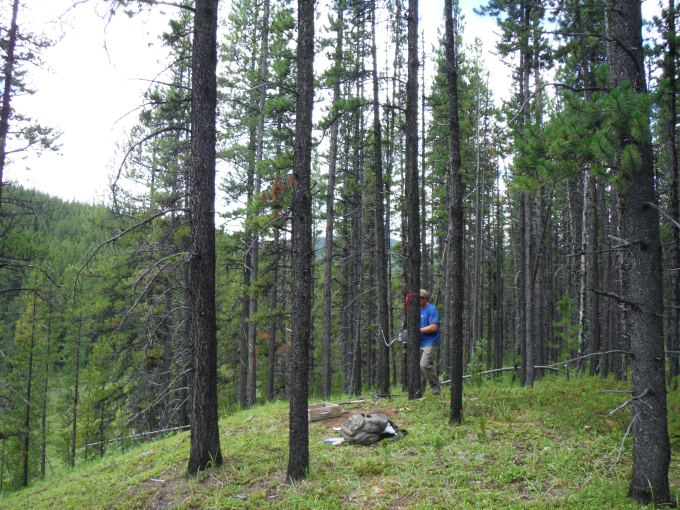
A “scraper” is a type of tool that is usually unifacial, meaning the stone was worked on one of its sides (or faces) only. Compare the two sides shown in the image above and you’ll see the one shown on the left is much smoother, except for a small piece that may have been broken off when digging the shovel test. The face of the scraper that is worked typically has pieces chipped off on the side or end in order to make a thick and strong edge. This is the scraping edge that could be used to prepare hides.
Unifacial working and a thick edge are the two main criteria used when identifying an artifact as a scraper, so as you can imagine there are a lot of different styles of scrapers found at archaeological sites. Just take a look at the beautiful example Reid describes in this blog post.
Regardless of what style of scraper you’ve found, a close look at the edge of these artifacts can reveal some “use wear,” when the edges become chipped, polished or worn down through the process of scraping hides, bone, wood or other softer materials. As a result of this wear, scrapers would occasionally need to be resharpened and the tools would become smaller and smaller through the resharpening process. It’s possible this scraper was considered too small to be of any more use and so was thrown away only to be found by us, perhaps thousands of years later.
Spokeshave
This week we feature an artifact from a large site we found on the Pineneedle Creek valley margin, west of Caroline (a community between Rocky Mountain House and Sundre) and off of the Forestry Trunk Road. The site was found when we were undertaking an assessment for Sundre Forest Products. More than 100 stone artifacts were recovered from this site, most of which represent chips broken off when making stone tools. This one stands out from the rest. It’s not so obvious an artifact as some of the stone tools we’ve shown in previous blog posts, but it represents the other critical component of an arrow or a spear: the shaft.
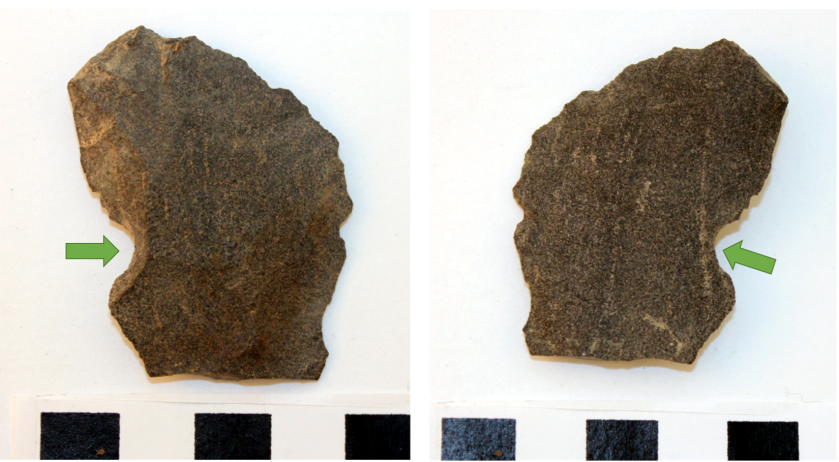
Figure 1: Two sides of an ancient spokeshave.
This is a “spokeshave”. This kind of tool is used even today for shaping and smoothing wooden rods for wheel spokes, chair legs, paddles, etc. You can find a spokeshave at your local hardware store, but it will look nothing like the example shown above.
An ancient spokeshave is thought to have been used to shape shafts for arrows, spears and darts. It’s recognized by the semi-circular notch on its side where you can imagine a wooden rod fitting nicely. In the picture above, the arrows are pointing to the notch on this artifact.
In many parts of Alberta, the soil is so acidic that materials like bone and wood don’t preserve so we don’t find arrow shafts. It’s pretty exciting and humbling to find an artifact that reminds us that there were once many more materials at these sites.

